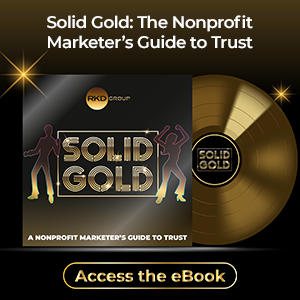Let’s face it: Fundraising isn’t exactly on the cutting edge of innovation. For an industry that prides itself on human connection, we sometimes act like a dial-up modem when it comes to adopting marketing basics.
Case in point: co-targeting. It’s not new. It’s not flashy. It’s not going to win any Oscars. But it does work, and somehow, many nonprofits still treat it like it’s secret NASA tech. So, let’s break it down to see how it can uplift your multi-channel approach.
What is co-targeting?
In the simplest terms, co-targeting means sending your direct mail and digital ads to the same people at the same time.
Picture this: Your direct mail hits mailboxes on the 15th of a given month. Two weeks before and two weeks after that date, you’re also serving the same people display and Facebook ads. Your donor sees your message a few times in their inbox, a few times in their feed and also in their physical mailbox.
That’s co-targeting. It’s all about frequency because familiarity builds trust, and trust builds giving. Based on your audience, you may change up your frequency of media touches:
- Acquisition audiences should receive your ads most frequently. They’re new, so you have to work harder to connect with them.
- Lapsed audiences can receive a bit less. They already know you, so they just need a friendly reminder of who you are.
- Renewal audiences require the lowest frequency of ad touches because they’re still warm and know you well.
Why co-targeting works
People may see up to 5,000 ads a day, so when you send a heartfelt direct mail piece and call it a day, you’re competing with cat food, car insurance and Christmas décor in October.
Co-targeting helps your message stand out and stay top of mind by surrounding your donors with consistent messaging across channels so that they remember you when it matters.
Also, think of it less like a one-time tactic and more like a rhythm that keeps your fundraising channels working in tandem all year round.
How co-targeting works
Co-targeting is part data science, part orchestration and part good timing. By using donor file information, fundraising teams—data, direct mail, digital and media—can identify who to send to, decide how to best reach them and track responses.
Comparing a control group who received physical mail only against a co-targeted group who received mail and digital media allows us to measure lift. Spoiler: The co-targeted group almost always performs better.
When to use co-targeting
Nonprofit organizations can see a lift in giving during campaigns that paired mail with media—even through the dreaded summer slump. But the real sweet spot is around high-response times when donors are already in a giving mindset.
Technically, you could use co-targeting all year, but it shines brightest during:
- End-of-year giving (your highest response window)
- High-urgency campaigns (when you need to stay top of mind)
Ultimately, this isn’t a one-off stunt. It’s a best practice. Running media alongside direct mail all year helps boost your results overall, even when you’re not in a big campaign push.
The bottom line
Co-targeting isn’t revolutionary—it’s responsible. It’s what every brand you interact with already does, from streaming platforms to your favorite coffee chain.
If you’re still running your fundraising channels like independent islands, consider this your gentle nudge to build bridges. Get your mail, media and messaging working together. Your donors—and your results—will thank you.


.png?width=2000&height=2000&name=image%20(30).png)



Leave a comment: